TORS OF DARTMOOR EXTRA
a collection of extra material from the tors of dartmoor team
Dartmoor Discovered: Belstone Common and its Abandoned ArtefactsTim Jenkinson on 15th November 2025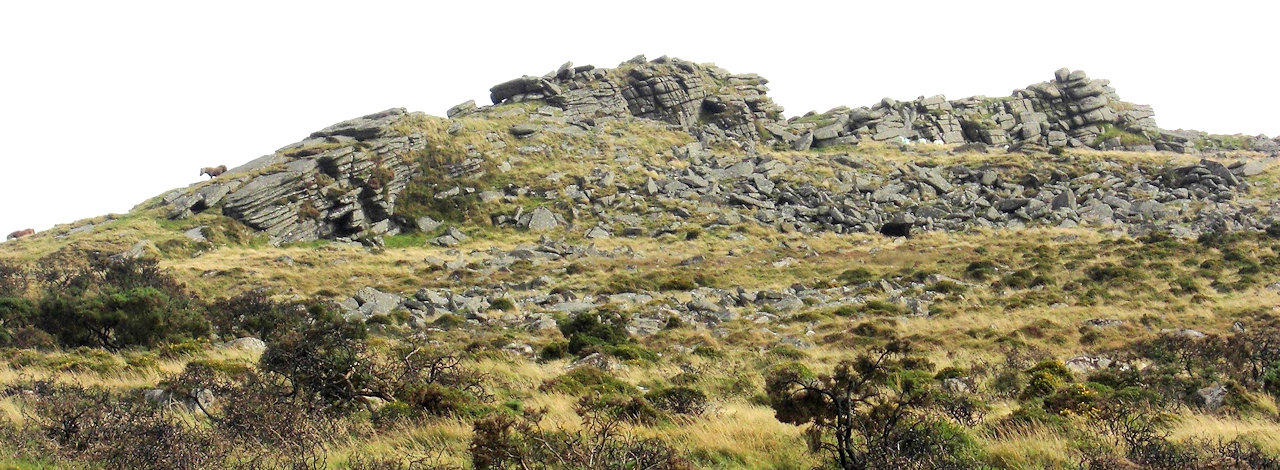 Tors End, Belstone. Photo by Tim Jenkinson About half a mile to the south of the village of Belstone on North Dartmoor is the start of the same named Common with its vast proliferation of granite clitter and sprawling tors that extend from an elongated pile known as Tors End in the north through the entire Belstone range on high to another fine cluster that is marked as Higher Tor on Ordnance (OS) maps to the south. However, not hardly the 'highest' on the ridge Lieutenant Colonel Mudge's Map of Devon from 1809 shows this tor as one might expect at the highest point, a place now reserved in modern times for 'Belstone Tor'. Although it is an intensely dramatic landscape it can be troublesome to negotiate because of huge areas of broken granite set on all sides of the tors but mostly concentrated on the eastern slope. Walking here can be difficult, but the views are breath-taking particularly to the south looking down the valley of the River Taw where the conical hill of Steeperton Tor dominates the scene in the far distance. On a clear day the vista is unparalleled and never disappoints. Given the abundance of the raw materials on offer and that granite has been well known as a reliable building stone for centuries, the slopes here have been plundered by successive generations. However, activity at the start of the 20th Century was recorded as so intense by London born and regular summer visitor Dora (Dorothea) James, that the village was unhappily depicted as the centre of this industry. She called the activities of "digging out and cutting up of the glorious piles" of Belstone Tors "are infinitely to be regretted" and she refers to the working places in the village as an "eyesore" and the stones she mourns as "grey memorials". 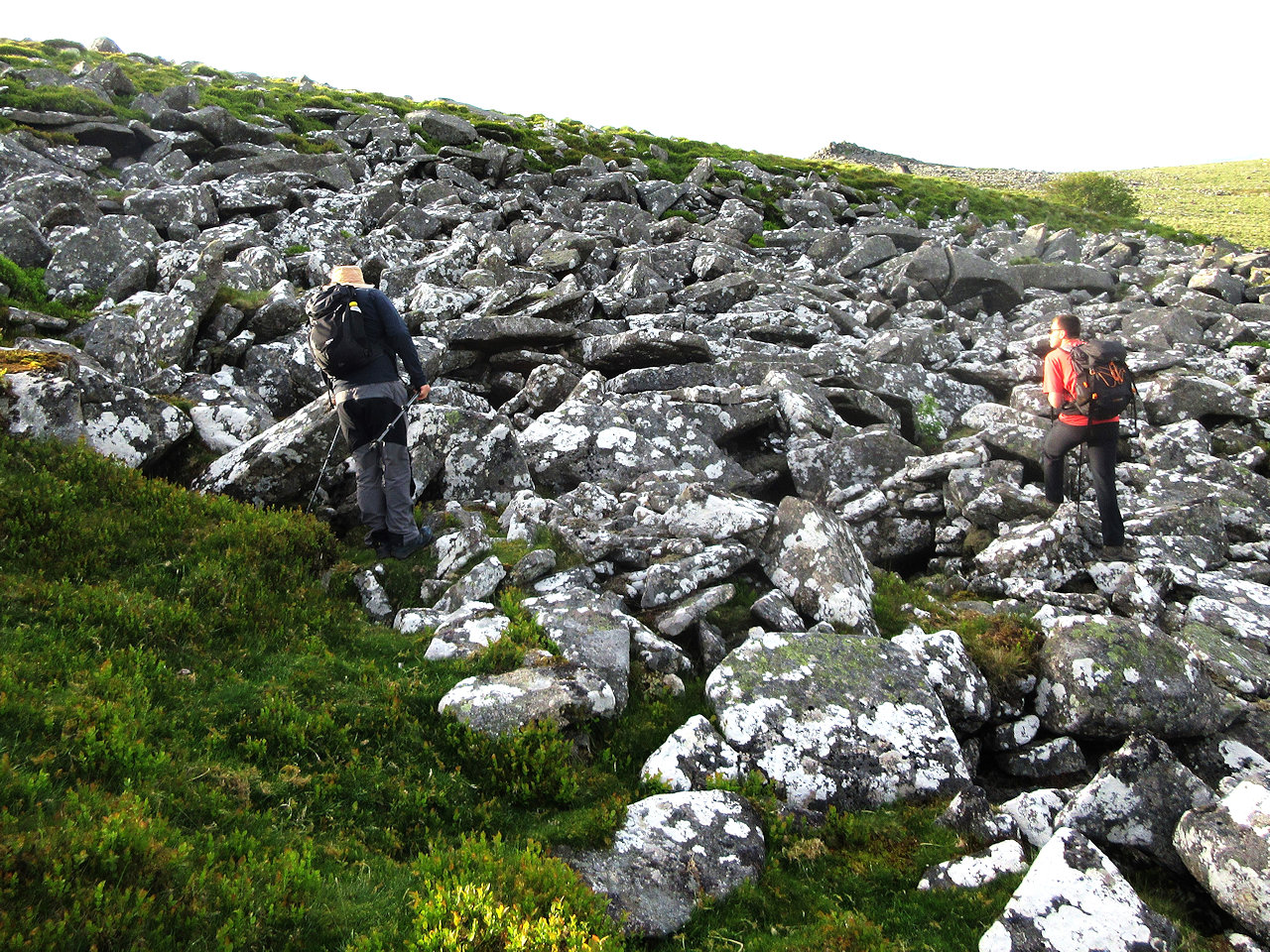 Belstone Common Clitter. Photo by Tim Jenkinson Not only were the rocks being used to build houses at this time they were also used to fashion agricultural utensils such as troughs, millstones, apple crushers, gateposts and rollers. The remains of at least two small quarries can still be found under the northern spur of the Common with much evidence of rock splitting in the area that supports the author's assessment of the time. We learn in the Book of Belstone (2002 page 46) that from the late 19th Century onwards two granite yards operated in the village run by Messrs William Brock and William Reddaway respectively. Some of the men employed seem to have worked on blocks in situation on the open moor with varying degrees of success. Whilst good specimens would have been removed to the village in horse drawn carts, other less impressive attempts were simply abandoned on the slopes because of mason errors or unexpected chips and splits occurring in the granite. It is these aborted artefacts that can still be stumbled upon today well over a century later. Over the past three decades or so various explorers including local historian Chris Walpole (CW 2021) have discovered many of these flawed stones and gradually a catalogue of their locations has been compiled with some even receiving entries onto the Devon and Dartmoor Historic Environment Record (HER) thanks to Chris's efforts. 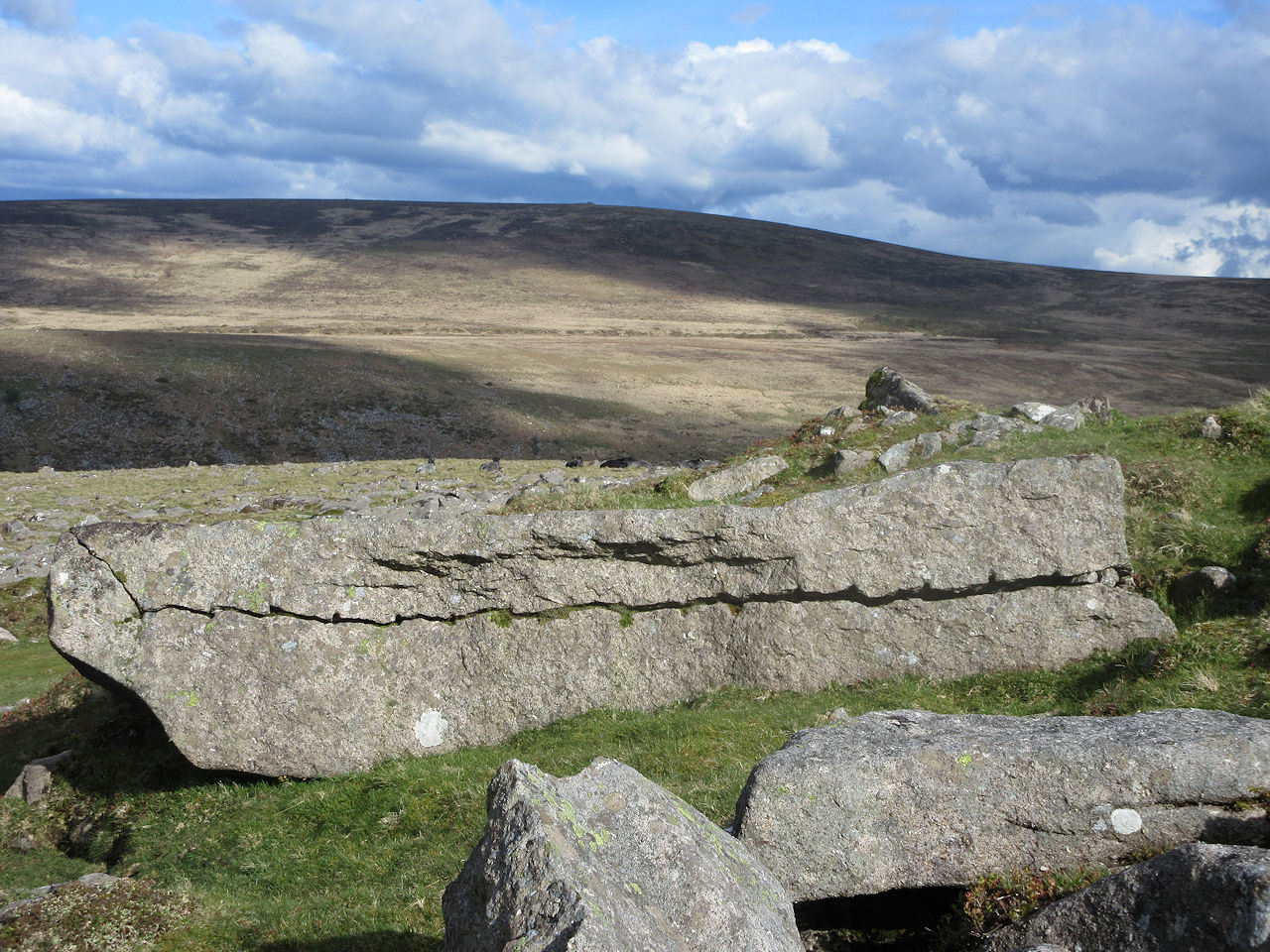 Split Rock, Belstone Common. Photo by Tim Jenkinson From my own perspective as I very much enjoy walking in this area, I first became interested in the phenomenon in the late 1980s when the occasional letterboxing clue gave bearings off the artefacts in question. In more recent times and with the advent of 10 figure handheld Global Position System (GPS) satellite fixings, the location of the stones has become much easier to record but they still require a description of other features in the vicinity such as their proximity to trees or bearings towards tors and prominent rocks to help with pinpointing exactly where they are. In May 2024 I was able to rekindle my interest in these stones with help from fellow enthusiasts Paul Buck and Max Piper the latter being the co-administrator with owner Rob Naylor of the fascinating website Dartefacts, where all known survivors are listed (see Dartmoor News 2024). Following a series of visits to the ridge several examples were found, some set close to the tors, others on the lower west slopes and near the curiously named Irishman's Wall which in itself is a fine relic that Crossing (1912 p 205-206) describes as a project that 'was formed by an Irishman to enclose part of the moor here and for the purpose of carrying out the work he brought a number of his countrymen to the locality'.  Apple Crusher segment, Tors End. Photo by Tim Jenkinson Near to the northern most pile of the Common the aforementioned Tors End (SX 6148 9253) there are some interesting artefacts including two quarter apple crusher segments and a rather rough-cut shallow trough amid the highest rocks. The rockpile here is described on the Tors of Dartmoor (ToD) Website as 'A charming start to the extensive collection of tors on the Belstone Ridge, Tors End is a long thin band of exposed granite, stretching up the north-western edge of Belstone Common, with an extensive clitter field on the western side'. There is a small quarry at the north end that was known as Sand Pit to William Reddaway (Book of Belstone p49) a place from where his men used to transport granite back to the village in carts via the track around Watchet Hill. 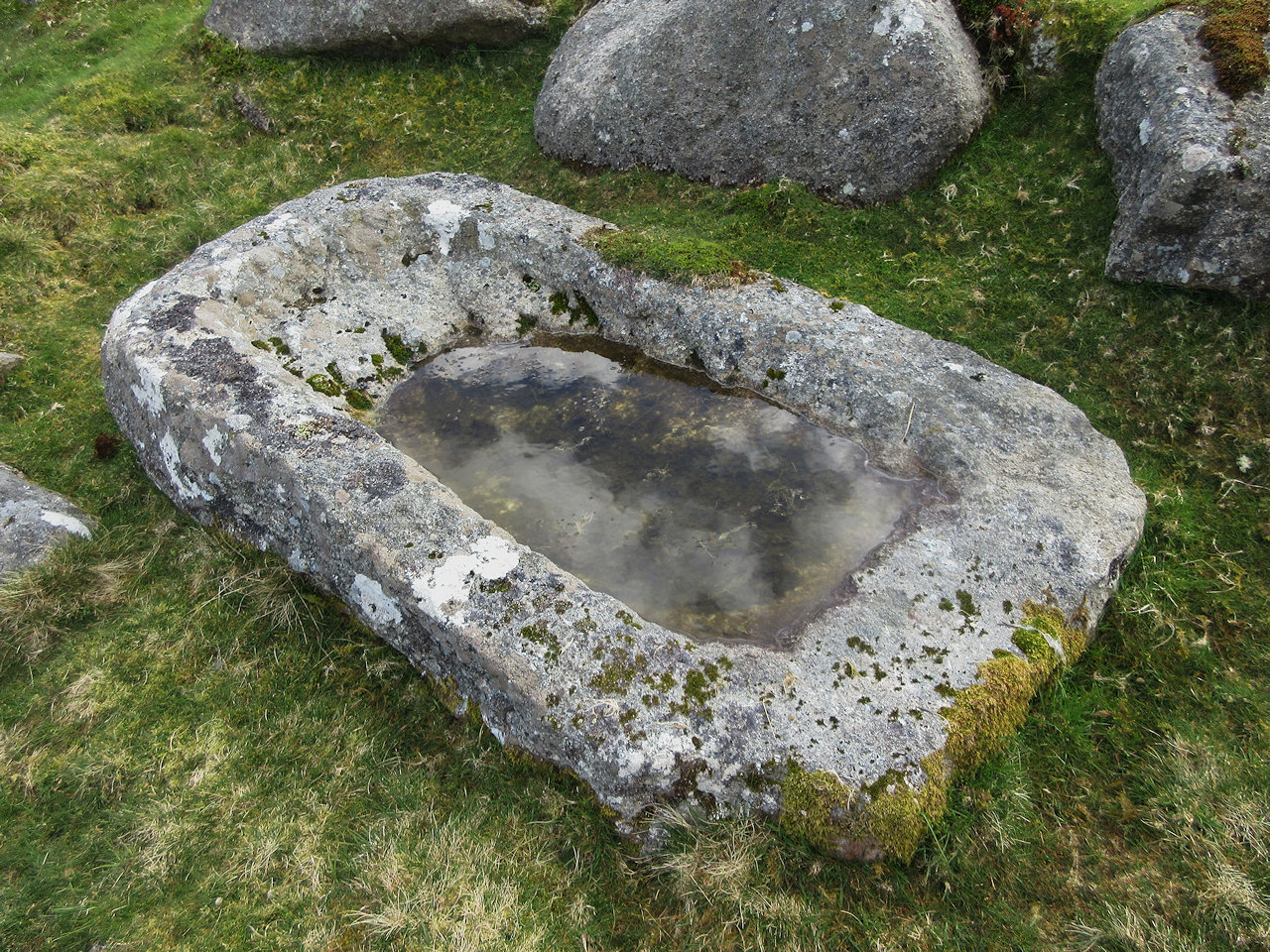 Trough, Belstone Common. pic by Tim Jenkinson One of the best examples of an abandoned trough can be found at SX 6186 9264. I first recorded it in an article for Dartmoor Magazine back in 2002 and gave its measurements at that time as around 183 cms in length and 66 cms wide. To this day it still traps rainwater in its upper surface and is so good to look at that it is naturally included in CW's guided tour of the area.  Belstone Common Tor. Photo by Max Piper Numerous part-cut millstones can be found on the lower southwest slopes of Tors End and further to the south under Belstone Common Tor (SX 6160 9237). This latter magnificent rockpile quite separate and distinct from that marked by the OS on high, is also described on the ToD website 'The tor's appearance - that of a jumbled mound of granite rocks - is reminiscent of Sharpitor near Burrator Reservoir. The concentration of clitter all around, but particularly on the east flank of the hill, is mesmerising and indicative of these tors' former magnitude before they were brutally broken up by weathering. The area, strewn as it is by magnificent granite blocks, has also been a target for stonecutters who utilised the abundance of rock and easy accessibility from Belstone village to cut up stone for monetary gain'. Amid the higher rocks here and unconnected with this activity is a remarkable military artefact a circular stone with central well thought to have once been used as a flagpole base. According to Chris and Marion Walpole (2002 p85) there is also a crudely cut July 1941 written in the concrete.  Flagpole Base. Photo by Max Piper Some of the millstone relics have similar holes drilled into their upper sides but because of the imperfect execution of this process they are seen to be out of alignment and not central to the stone, thereby rendering it useless. Being forced to abandon the stones after perhaps working for days at the site must have been a source of considerable frustration. 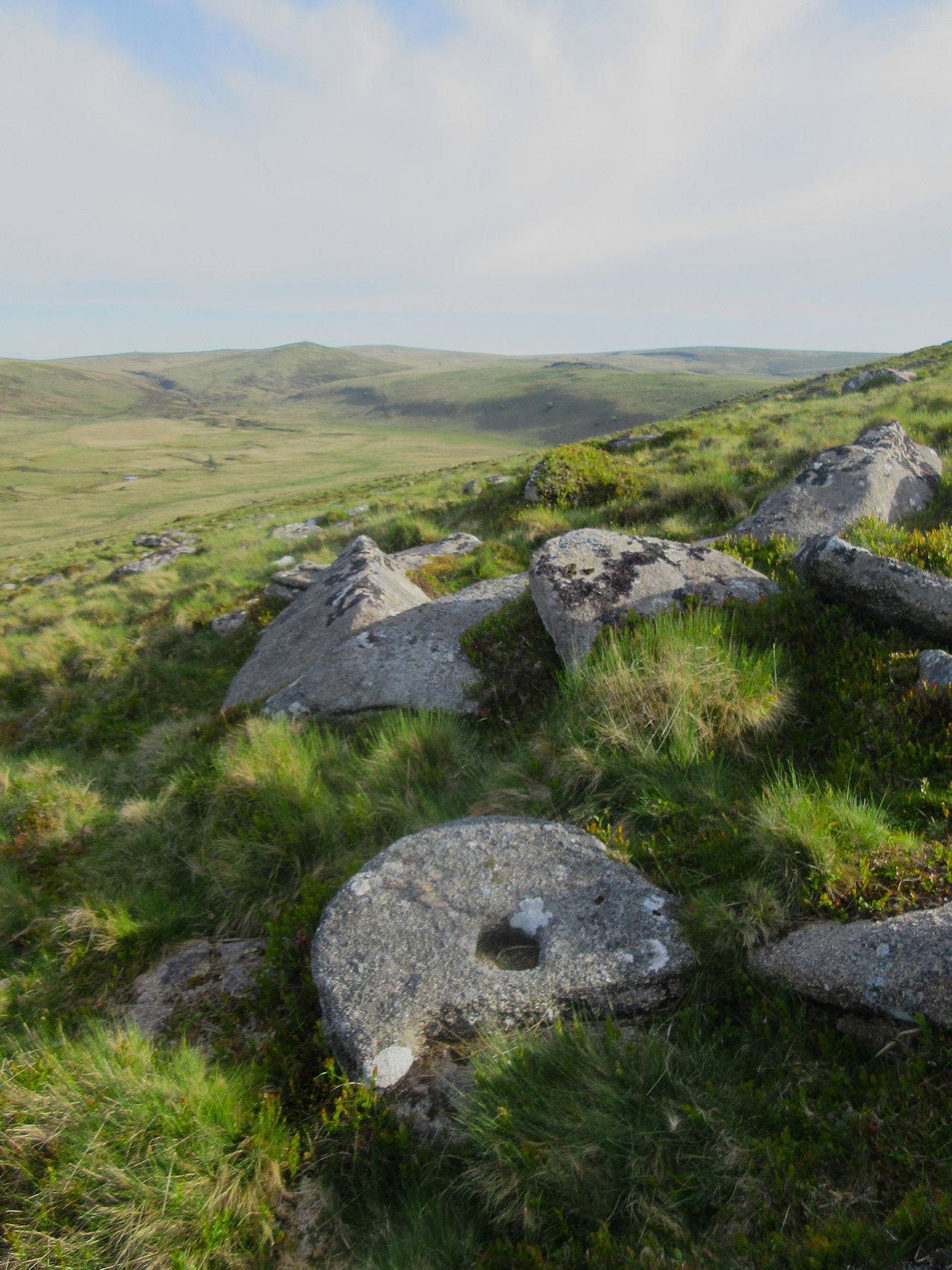 Belstone Common Millstone with hole. Photo by Tim Jenkinson Other circular stones without wells can be found on the slopes and there is a good example lying on the eastern side near to the Irishman's Wall at SX 6150 9188. Be warned though that in the summer months the gorse bushes, long grass and whortleberry here can conceal many of these artefacts making them difficult to locate. As time progresses some will undoubtedly be lost to vegetation. That is why the Dartefacts record is so important. 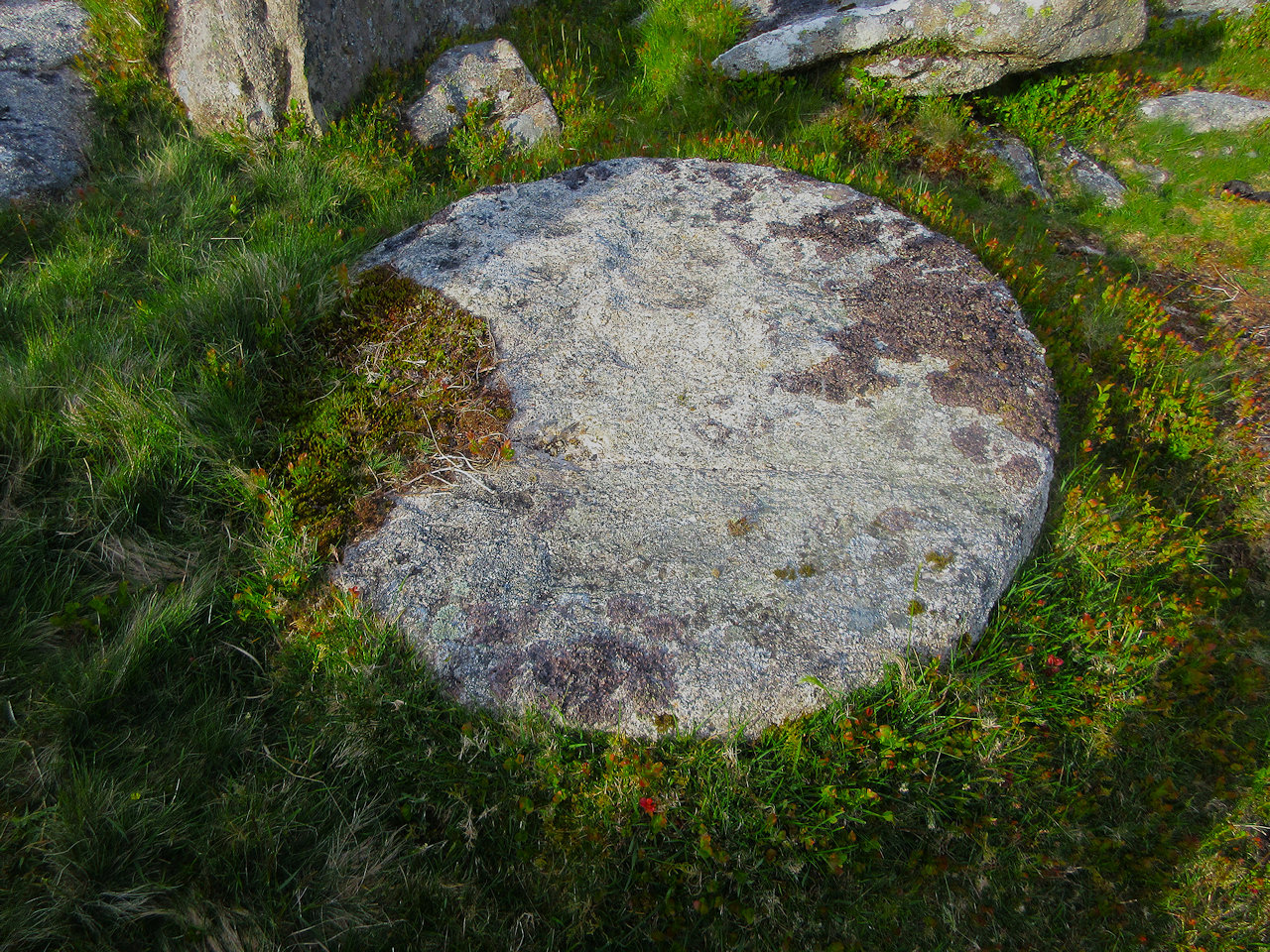 Irishman's Wall Millstone. Photo by Tim Jenkinson There are several abandoned granite rollers that are worthy of inspection. One of these is such a good specimen that apart from its size it is hard to see why it was left on the hillside. Discovered by Rob Martin in the early 1990s it can be found at SX 6174 9213 on the eastern slopes of the Common. There is another now part buried in the turf close to the other small quarry at SX 6158 9249. The abundance of granite here shows attempts to split it with many rocks bearing the scars of tare and feather work. 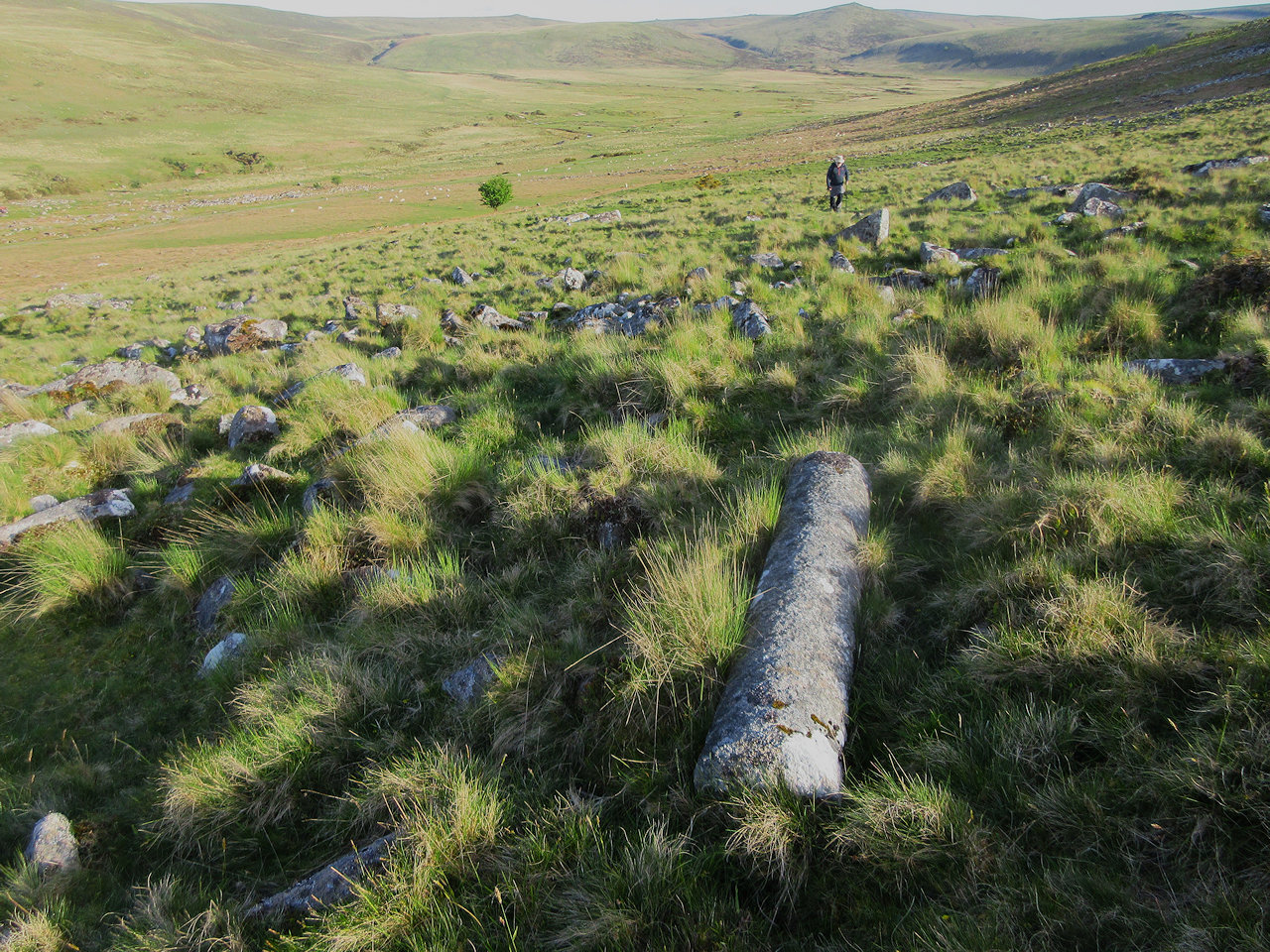 Belstone Common Granite Roller. Photo by Tim Jenkinson Whilst many of these forgotten artefacts have been located there are without doubt others yet to be found across the Common. To discover more about those already known, the reader is directed to the Dartefacts website where information on their various locations is held. In the meantime, enthusiasts will keep visiting and looking amid the rocks in the hope that there will be a new discovery. For the inquisitive you cannot beat a bit of worked stone hunting to complement your walk around the magnificent Tors of Belstone, each serving as a reminder of the industrial past of this charming North Dartmoor village. Acknowledgements
References:
|